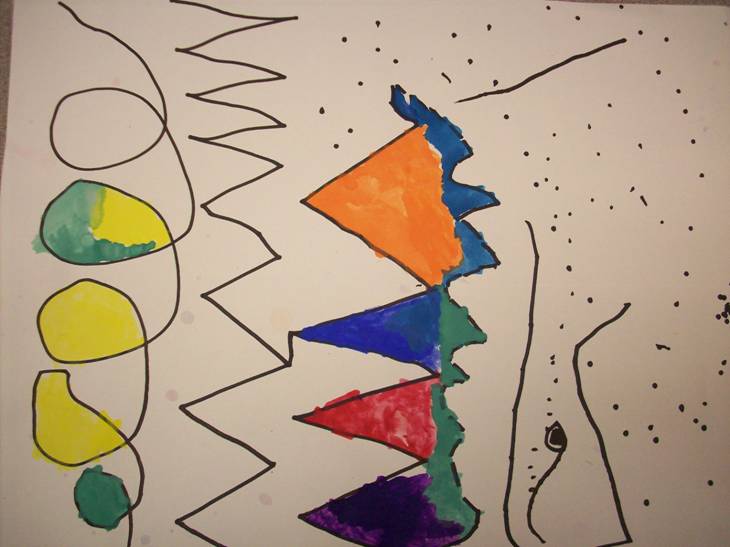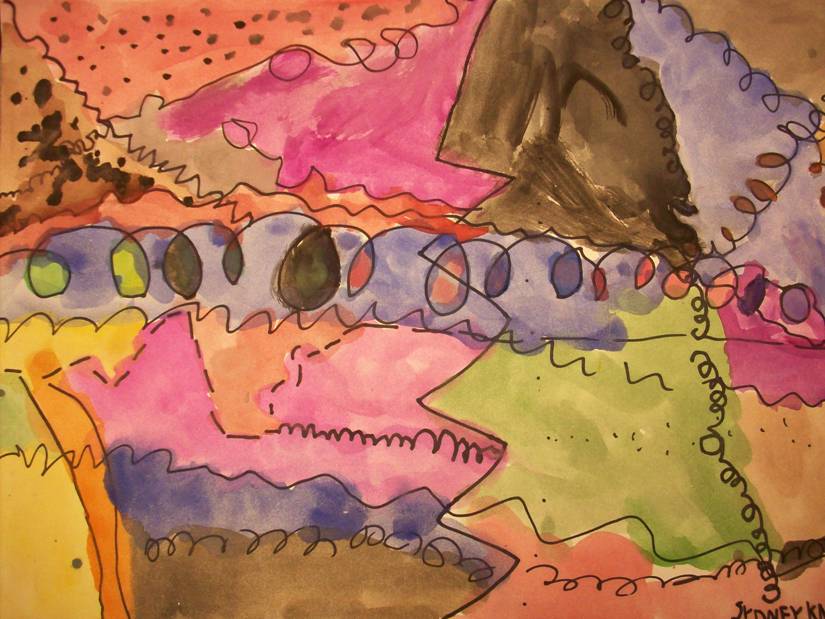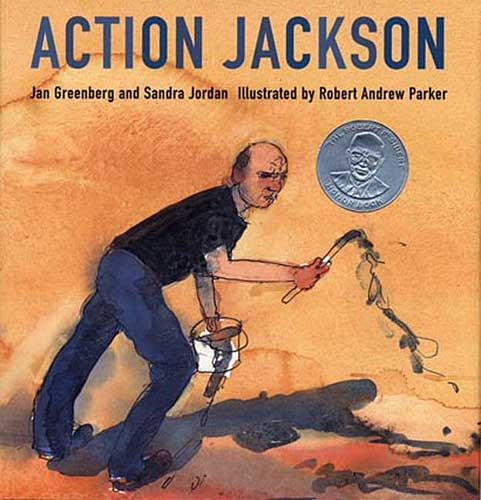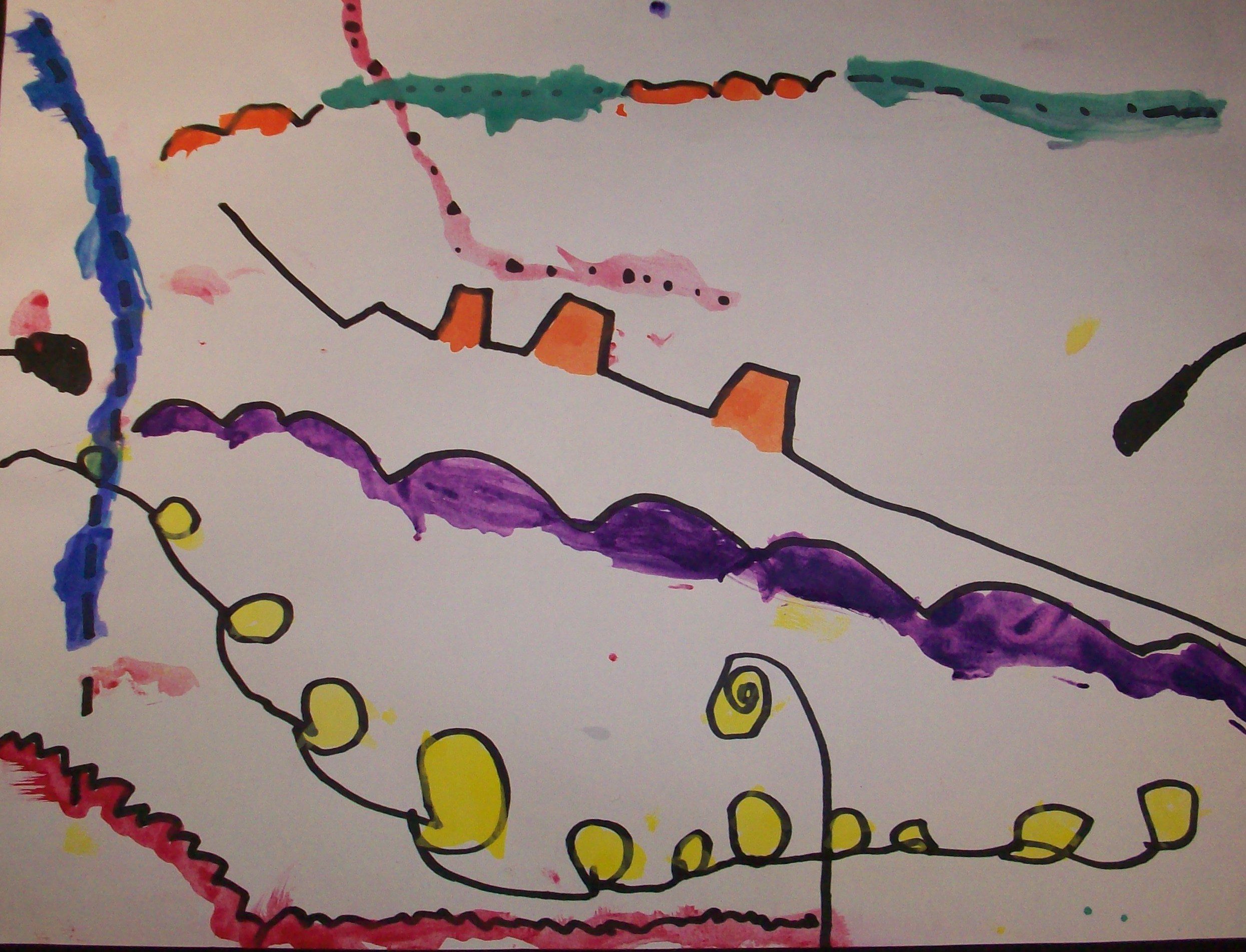Grade Level: Kindergarten
Art Elements: Line – Students will produce 5 or more line types
Art Skills: Drawing, Painting, Paintbrush Care
Art History: Jackson Pollack
This is a great beginning of the year lesson to introduce the Art Element of Line to Kindergarten students. This is also their first experience using paint, so the care of paint and the paintbrush is important. Additionally, I love how the first artist they learn about rhymes. “Action Jackson.” This really helps the kiddos to connect the artist to the work.
Step 1: Introduction
Read book excerpt, “Action Jackson” by Jan Greenberg and Sandra Jordan. Since the book is long, it’s recommended to paraphrase this book to the students. Talk about Line and how he used line to match his feelings or emotions. He also painted with music, specifically Jazz. Show students examples of different types of lines on the projector screen. As you show and demonstrate the lines, ask studetns to talk about the emotions that might connect to these lines.
Step 2: Work Time
Students will get an 9×12 paper, and they will follow the teacher, step by step, making different lines of their choice using a Sharpie marker. The lines must go across the paper and touch the edges. You could use sharpie or crayon or even paint.
Step 1: Make a zigzag line
Step 2: Make a curvy line
Step 3: Make short dashed lines
Step 4: Make thick lines
Step 5: Make Straight lines
Step 6: Make a spiral line
Step 3: Painting
On the next day’s class, review Action Jackson and his lines. Show them the following website as a group:
www.jacksonpollock.org/ Paint like Jackson Pollack online as a large group activity.

Students will paint in-between their lines. Allow them to choose where to paint, either in between lines or between lines and the edge of the paper. This gives creative freedom and more referencing to space and line. It works best to start with Yellow, and move around the color wheel by steps instead of just letting them paint as a free for all. By breaking it down it heps to enhance the quality.
By viewing some of the examples you can see how some students fill the whole paper with color, while others leave a lot of white space. This allows for creative freedom and decision making, both great skills for early childhood education.
Magazine articles and podcasts are opinions of professional education contributors and do not necessarily represent the position of the Art of Education University (AOEU) or its academic offerings. Contributors use terms in the way they are most often talked about in the scope of their educational experiences.







